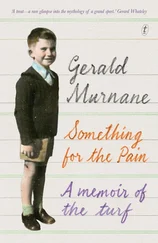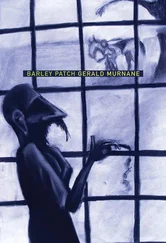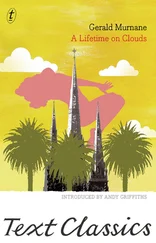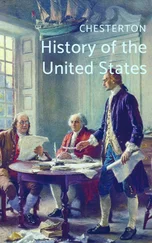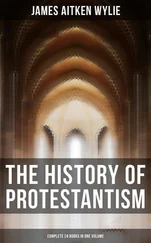On a certain day in the forty-eighth year after the young man had fastened to the wall of the so-called bungalow the four illustrations mentioned, and when the older man who had previously been the young man had long since stored in some of the hanging files where he stored such things both the illustrations and the few pages on which he had written the beginnings of the few abandoned works of fiction that he had written during the year and more when he sat from time to time at the card table beneath the illustrations — on that day, the older man learned that he could recall from the illustrations only black image-hair and a black image-beard from the first, no image-detail from the second and not even the name of the subject of the illustration, a black image-eye-patch from the third, and a bald image-head from the fourth. Once having learned these facts, the man decided to report them in a work of fiction that he was then planning to write. Soon afterwards, he decided to report in the same work the following facts.
The man could no longer recall whether or not he had read any work of fiction by the writer whose appearance and whose name he could no longer recall.
The man could recall no phrase or sentence from the one work of fiction that he could recall having read from the works of the writer with the black hair and the black beard. However, the man could recall that his reading of the last page of that work had caused to appear in his mind an image of a man walking alone across mostly level and treeless grassy countryside. The man seemed to recall also that the image-man walked boldly and resolutely even though he could not have known his whereabouts in the mostly level and treeless image-countryside that surrounded him, given that he had stepped down impulsively not long before from a railway train that was travelling across a vast country in which were countless districts of mostly level and treeless grassy countryside.
The man could recall no phrase or sentence from the one work that he could recall having read by the man with the bald head. Nor could the man recall any image that had appeared in his mind while he was reading the work.
The man could recall two short passages from the one work that he had read from the works of the man with the eye-patch. The man seemed to recall a number of images that had appeared in his mind while he had read the work, but he suspected that these images had appeared some years later while he was reading a biography of the man with the eye-patch. The two short passages are:
A VOICE: Bloom, are you the Messiah ben Joseph or ben David?
BLOOM: ( Darkly ) You have said it.
and
BANTAM LYONS: Prophesy who will win the Saint Leger.
The man could recall nothing of what he had learned about the man with the black hair and the black beard from the book where the four illustrations had been printed. He could recall his having learned from that book that the man whose name he could not recall had spent all of his adult life in a small town on a narrow grassy plain with an ocean on one side and with forest-covered mountains on every other side. He, the man, could recall his having learned from the book mentioned that the man with the eye-patch had dressed conservatively but had worn several rings on his fingers. (After he had recalled this, the man had recalled also that he himself, soon after he had learned about the several rings, had begun to wear a ring with a rectangle of black onyx set in nine-carat gold.) He could recall his having learned that the man with the bald head had claimed to believe that the greatest good available to any person was sensual pleasure; that the man had claimed to despise as hypocrites the persons of the so-called middle class or respectable class who claimed to believe otherwise; and that the man claimed that he wrote in order to prove his claims. Finally, the older man could recall that he himself, during the year and more when he had lived in the so-called bungalow, had claimed to believe what the bald-headed man had claimed to believe and had even tried to write fiction in order to prove his claims.
On the day mentioned earlier, the older man could recall many of the images that had appeared in his mind late on many an evening after the young man had got up from his card table and had lain in the bed beside the card table and had recalled a certain evening not more than a year before when he had been invited to the house where one of his fellow clerical officers lived with his parents and his younger sister and where he, the young man, had observed often during the evening the face and the body of both the younger sister and her mother. The older man recalled that the young man had decided during the evening mentioned that he would include in the work of fiction that he was then writing a certain two female characters of the so-called middle class or respectable class a mother and a daughter who were hypocrites. The older man could recall in detail many of the images mentioned earlier in this paragraph but of the work of fiction mentioned he could recall nothing.
Between two pages, each of which was covered with printed words comprising part of a work of fiction, a narrow strip of blank paper appeared. The pages were part of a magazine with a paper cover and of a size supposedly suitable for carrying in a handbag or in a large pocket. The strip of paper was no more than a few millimetres wide and was attached to the spine of the magazine in the same way that the surrounding pages were attached. A boy of fourteen years was holding the pages of the magazine far apart so that he could look more closely at the narrow strip of paper. When he had looked more closely, he saw that the outer edge of the strip was jagged, as though a person had wanted to remove from the magazine as much as possible of the page of which the strip had been a part and had held a pair of scissors so close to the spine of the book that the person was unable to make one continuous cut but had to make successive strokes and to lift the blades away from the paper after each stroke. When the boy had looked more closely still, he saw that the strip of paper was bunched a little at one end and torn a little at the other end, as though the person who had used the scissors had afterwards tried to tear away the strip of paper so that no trace would remain of the page of which the strip had been the inner margin.
The boy mentioned was sitting in a corner of the lounge room of a house in a certain outer suburb of Melbourne. The boy lived in the house with his parents and a younger brother. In the corner where the boy was sitting was a bookcase containing about thirty books and perhaps a hundred magazines of different kinds. The boy had read a few of the books and had looked into all of the others. He had read several of the articles in each of the magazines.
More than fifty years after the boy had sat in the lounge room and had found in a certain magazine the strip of paper mentioned, the man who had been the boy could remember from all the words that he had read and from all the illustrations that he had looked at in all the magazines mentioned some of the details of each of two black-and-white illustrations and some of the words from the caption beneath one of the illustrations. The last-mentioned illustration had been printed in one or another issue of a magazine with the title WALKABOUT. The man remembered from the illustration certain details of certain images of young female persons. The persons were members of a group of perhaps ten such persons. Some of the persons had seemed to the boy to be young women and some had seemed to be older girls. More than one of each sort of person had a child standing beside her or resting in her arms or sucking at one of her breasts. Some of the persons were sitting and some were standing but all were facing the camera. Each of the persons wore a piece of cloth in front of her groin but no other covering. At the centre of the seated persons was seated a bearded man who seemed to the boy very old. The boy had often read the caption beneath the illustration of these image-persons, but the man remembered from the caption only that the bearded man had had the title King before his name and that the female persons were his wives.
Читать дальше

